
This is a very simple camera in the large format wooden view camera category. It is a half-plate, 13 x 18cm, and due lack of resources it ends up being very light and compact for this format.
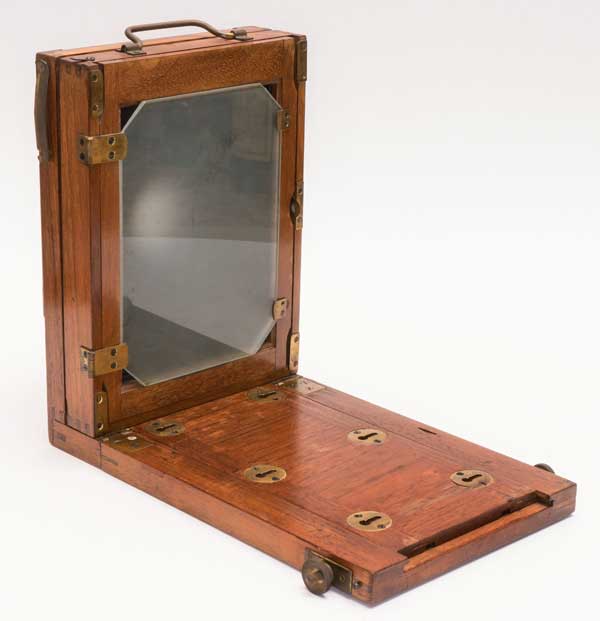
When folded, it looks like a small suitcase. By releasing the side locks, the rear board unfolds to form the horizontal base of the camera. Over it we slide the back of the camera causing the extension of the bellows. For this type of construction is called a tailboard camera. This is opposed to drop bed, which is the case when the front of the camera falls forward making a base for the lens board to advance, instead of the film plate going backwards.
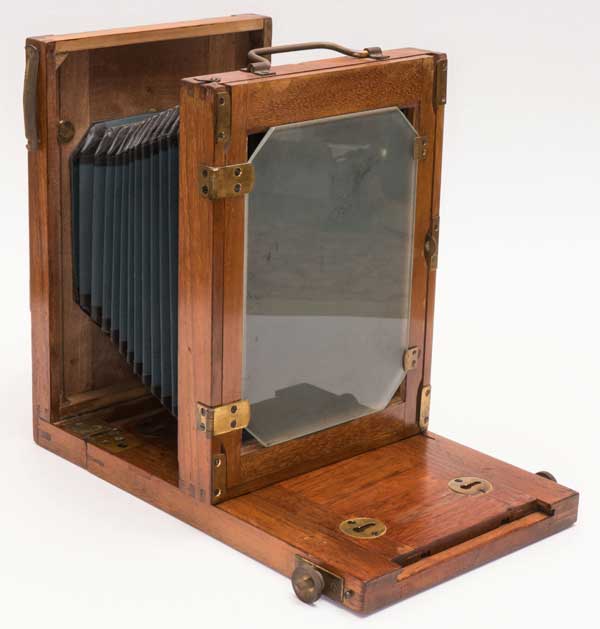
The rear of the camera must then be engaged in one of the three available positions depending on whether the lens to be used is more or less angular. The center position, as in the photo above, is ideal for a normal lens. For this format it would be around 220 mm.
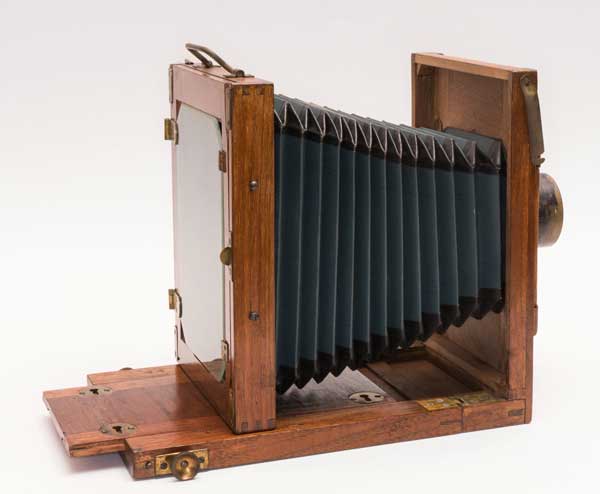
Focus adjustment is performed by turning the right knob on the tailboard and this actuates a rack-and-pinion device that makes the camera’s rear slide forwards or backwards. The focus can and must be locked with the lock nut on the left side before you load the film/plate holder. Otherwise, chances are that the back will move and lose focus.
The back of the camera has just this back-and-forth movement to focus. No tilts, rotations or shifts are possible. Also note that only portrait format is offered on this camera. Of course, you can rotate the entire body with the head of a tripod. But that’s not practical at all as this construction is only really stable when it’s upright.

The front of the camera offers vertical and horizontal shifts but no tilt or swivel. In the same format, as a comparison, we can see the ICA Excelsior. This is a more complete tailboard with a good set of other movement and a squared back that lets you turn 90 degrees to toggle between portrait and landscape.
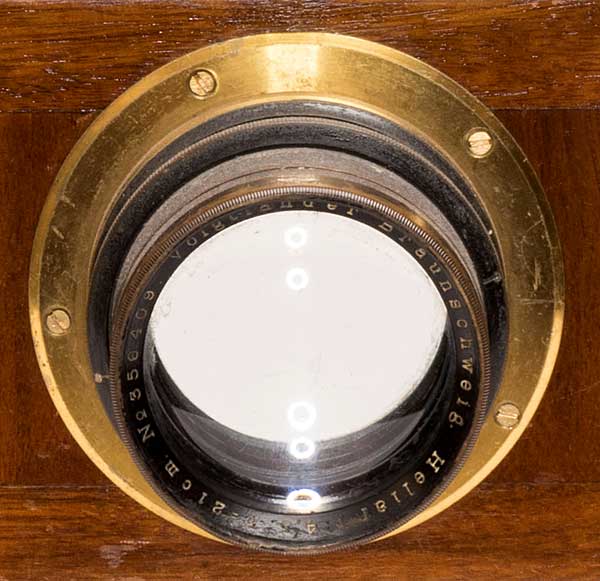
This specimen is equipped with a 21 cm, f/4.5 lens. It’s a Voigtlander Heliar. This lens goes well with it because of its focal length, luminosity and even age. The lens is from 1928/29 and the camera is probably from interwar as well. But they didn’t enter the collection together. I think hardly anyone at the time would put a sophisticated lens like a Heliar on a camera as basic as this.
The manufacturer of this camera was Alfred Brücker, based in the town of Rabenau near Dresden. According to Camera-Wiki, it was active from 1900 to 1955 producing studio and field view cameras.
A page from an Alfred Brücker features this model called Paris II.
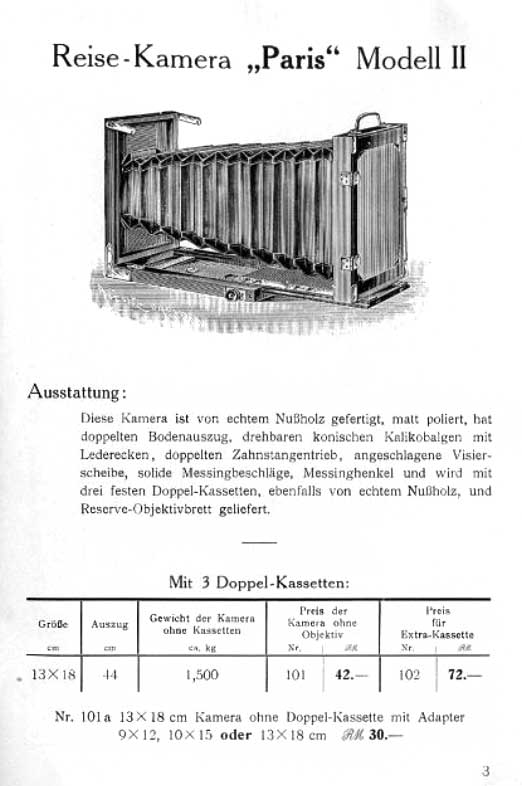
The description emphasizes that it is made of authentic walnut, bellows with leather corners, double rack and pinion drive, solid brass fittings and it comes with 3 double film holders.
